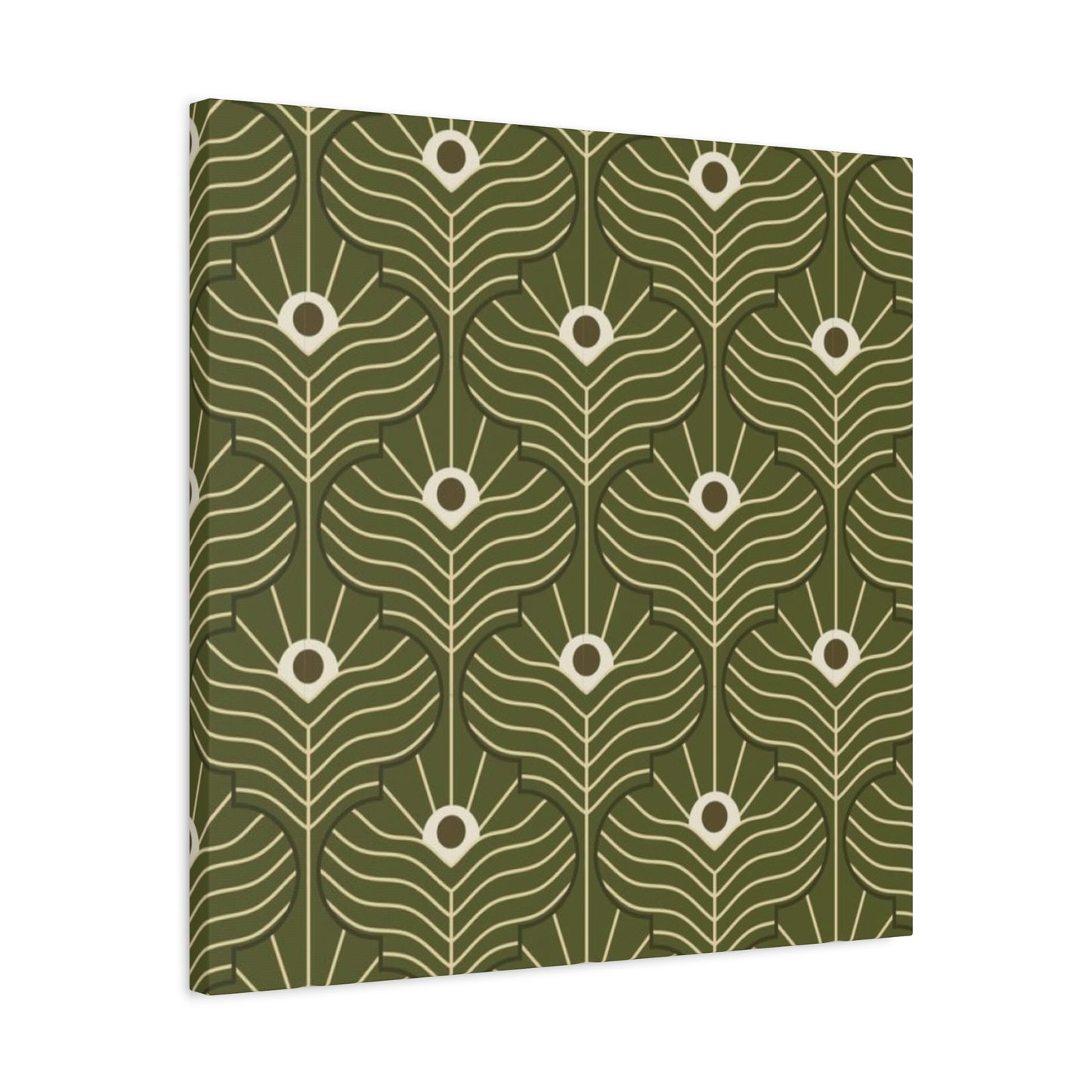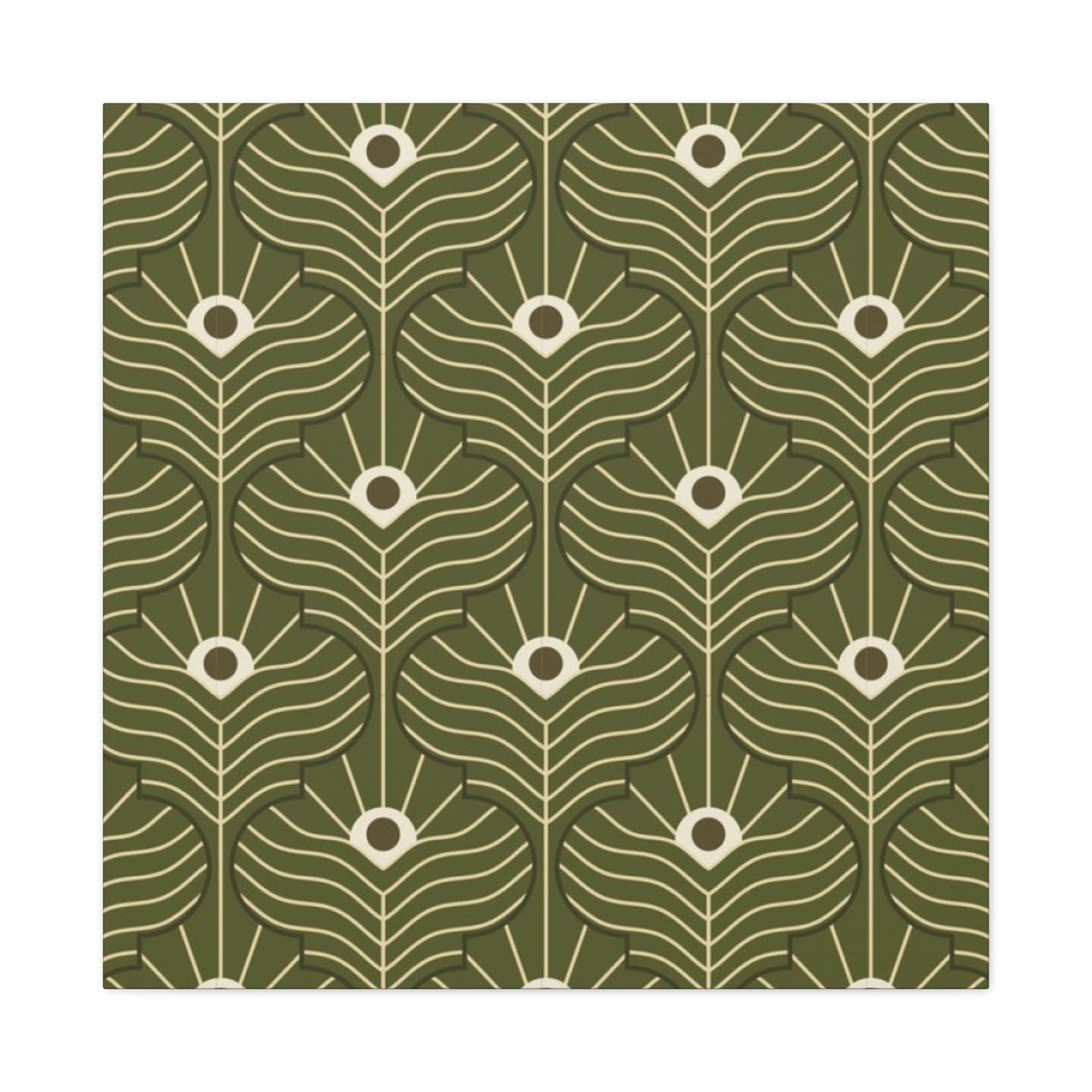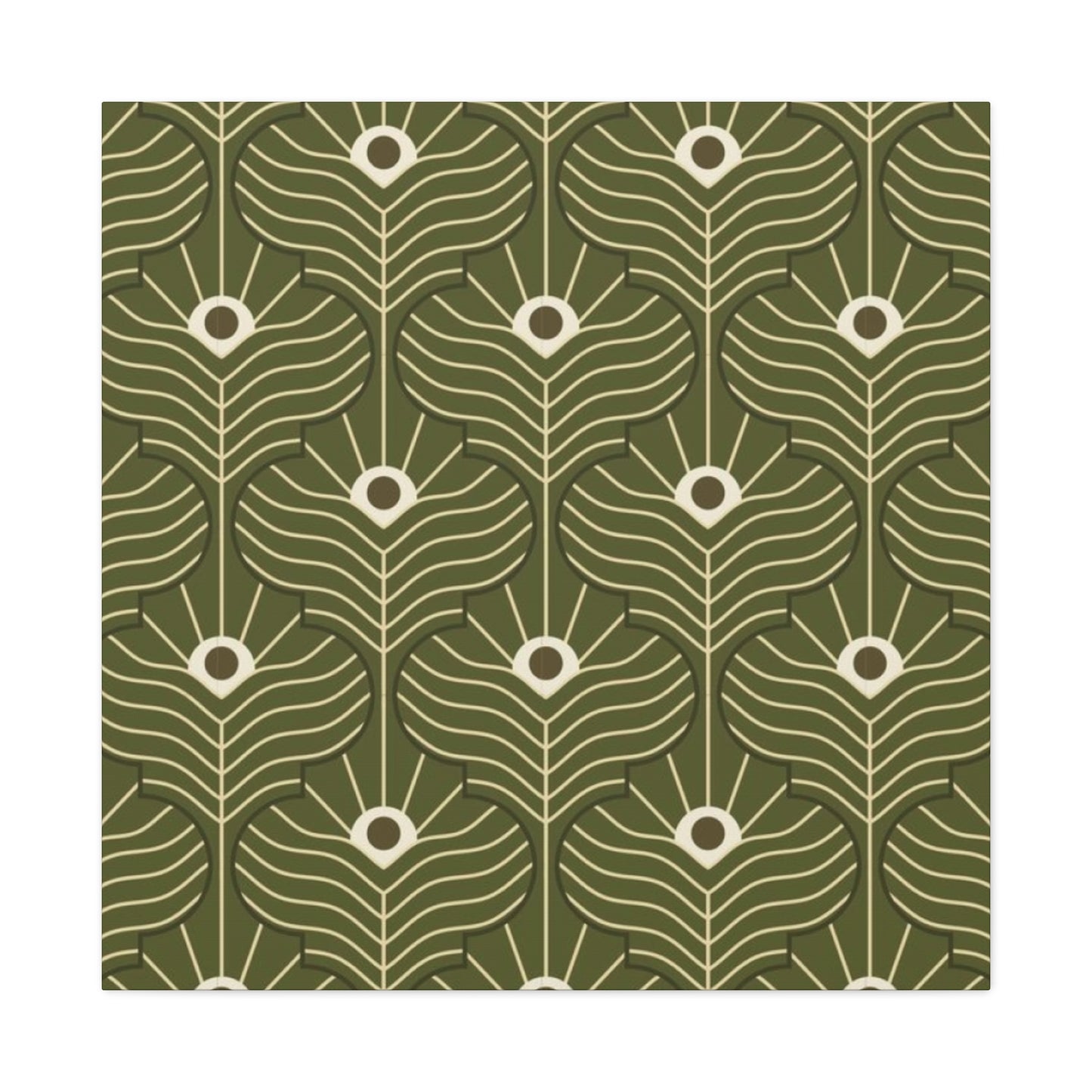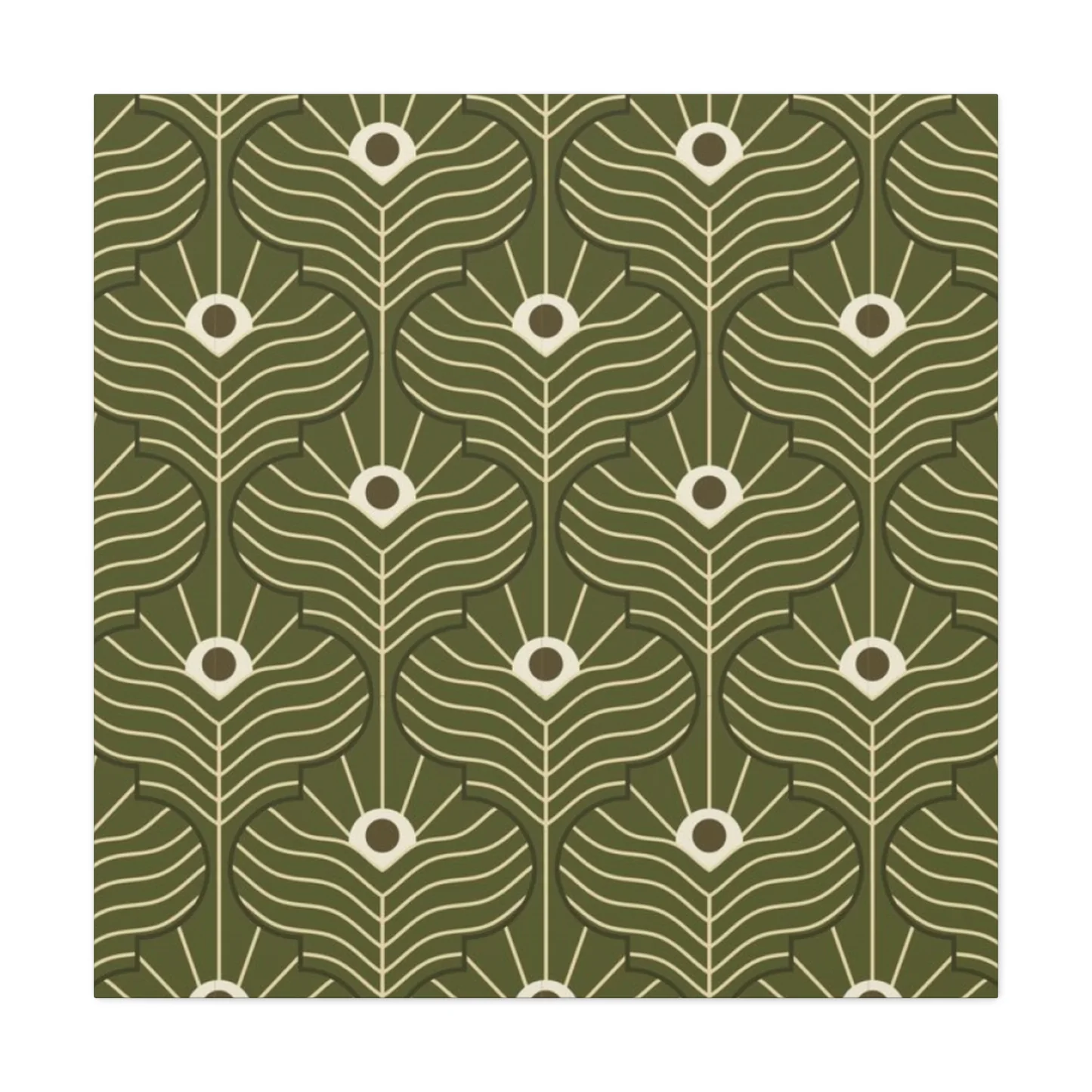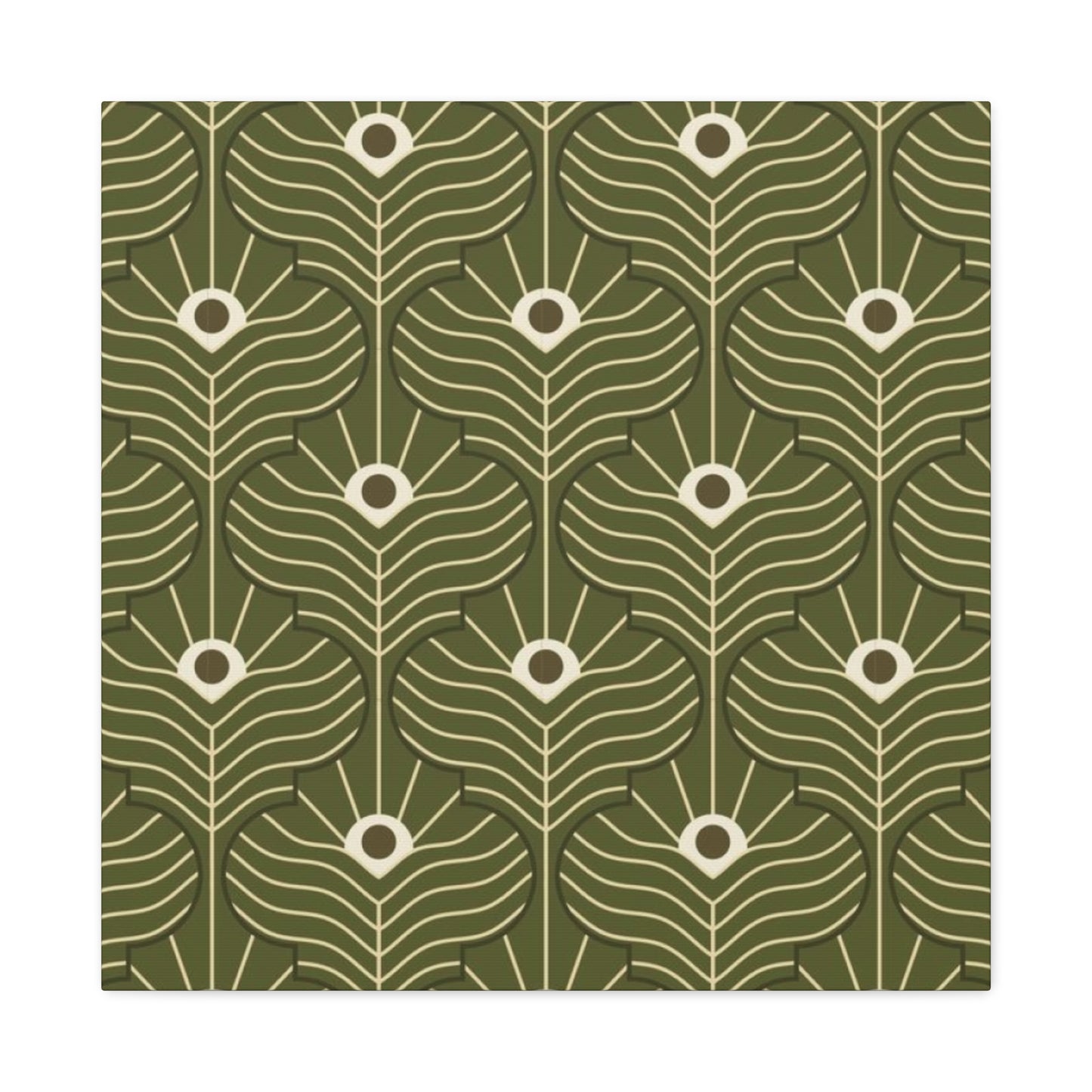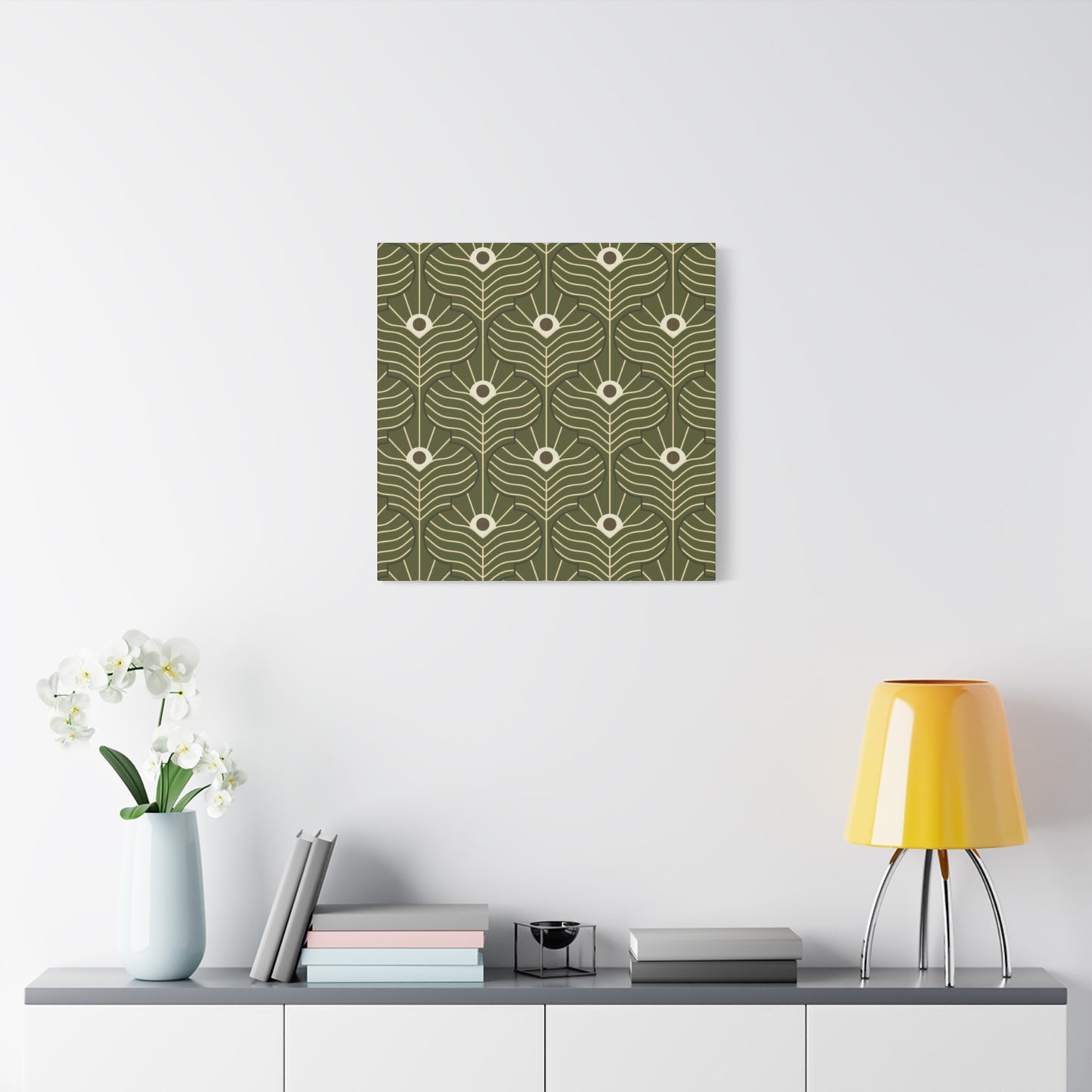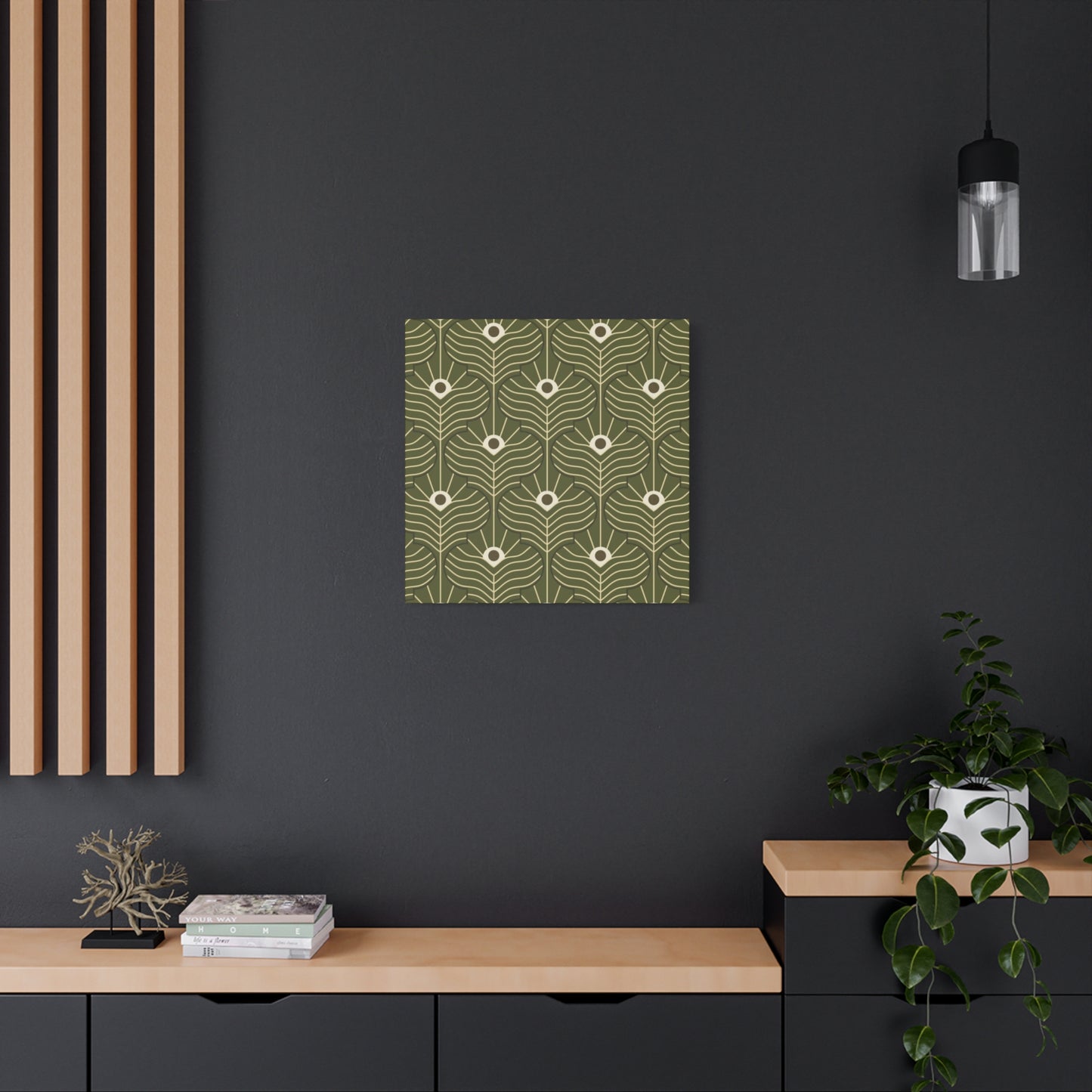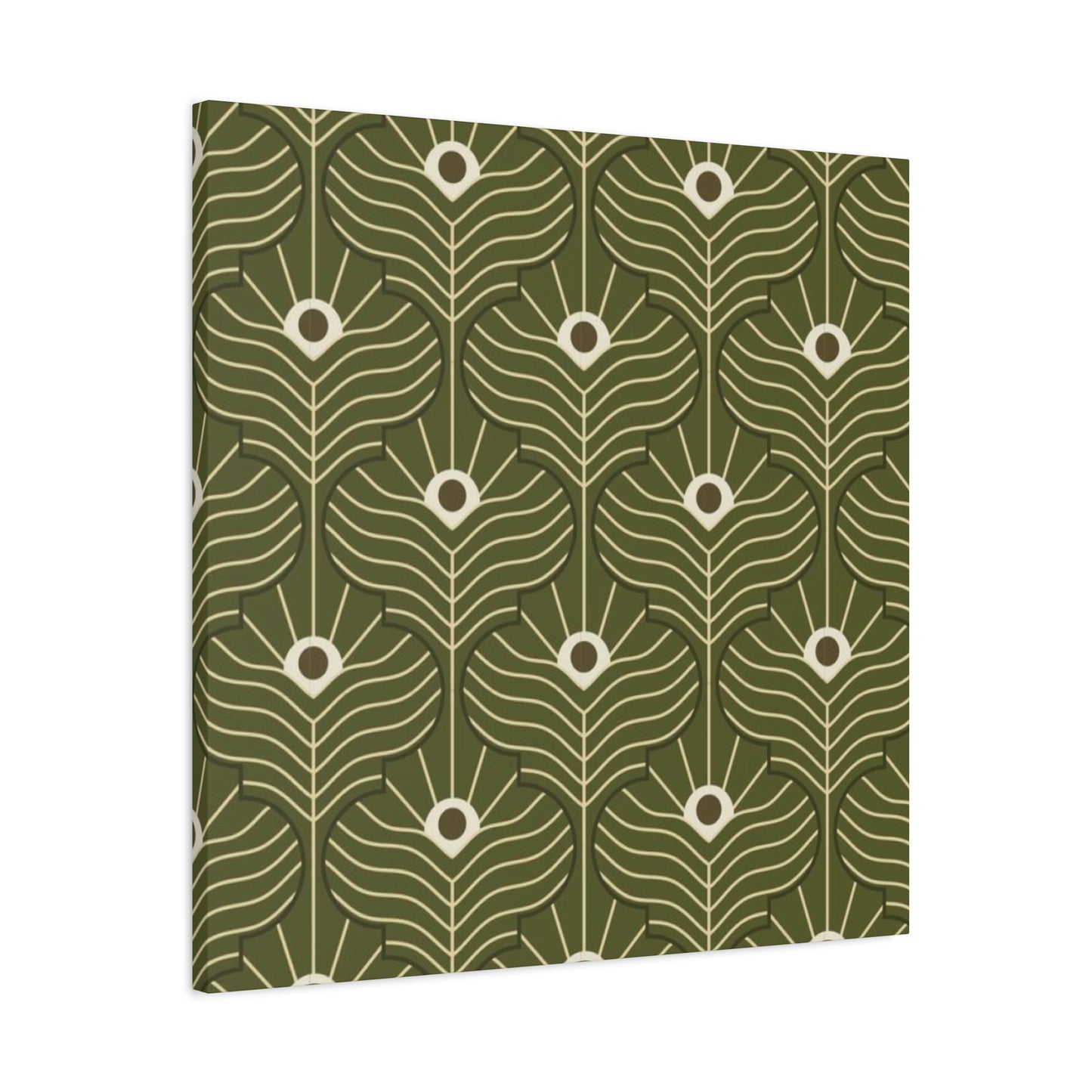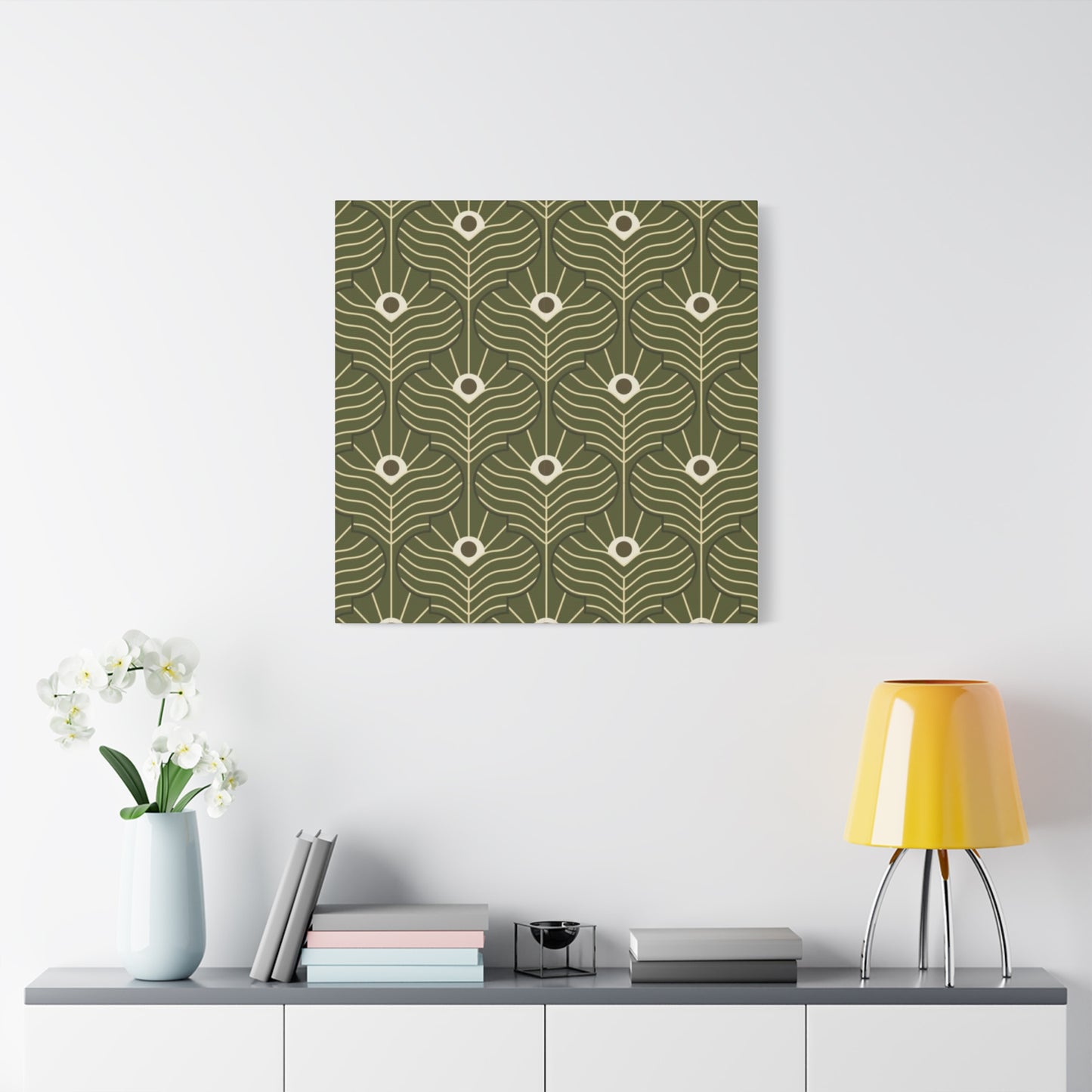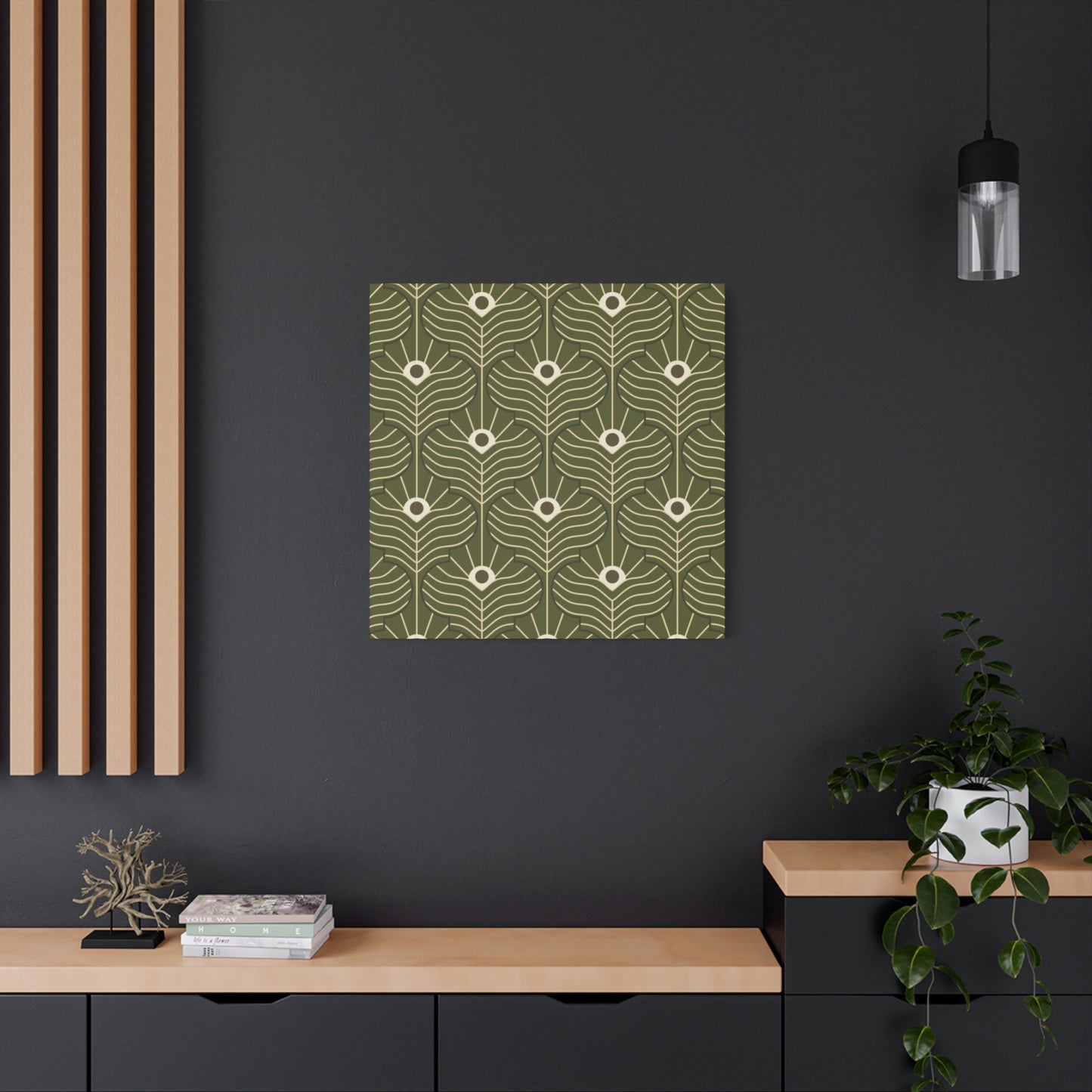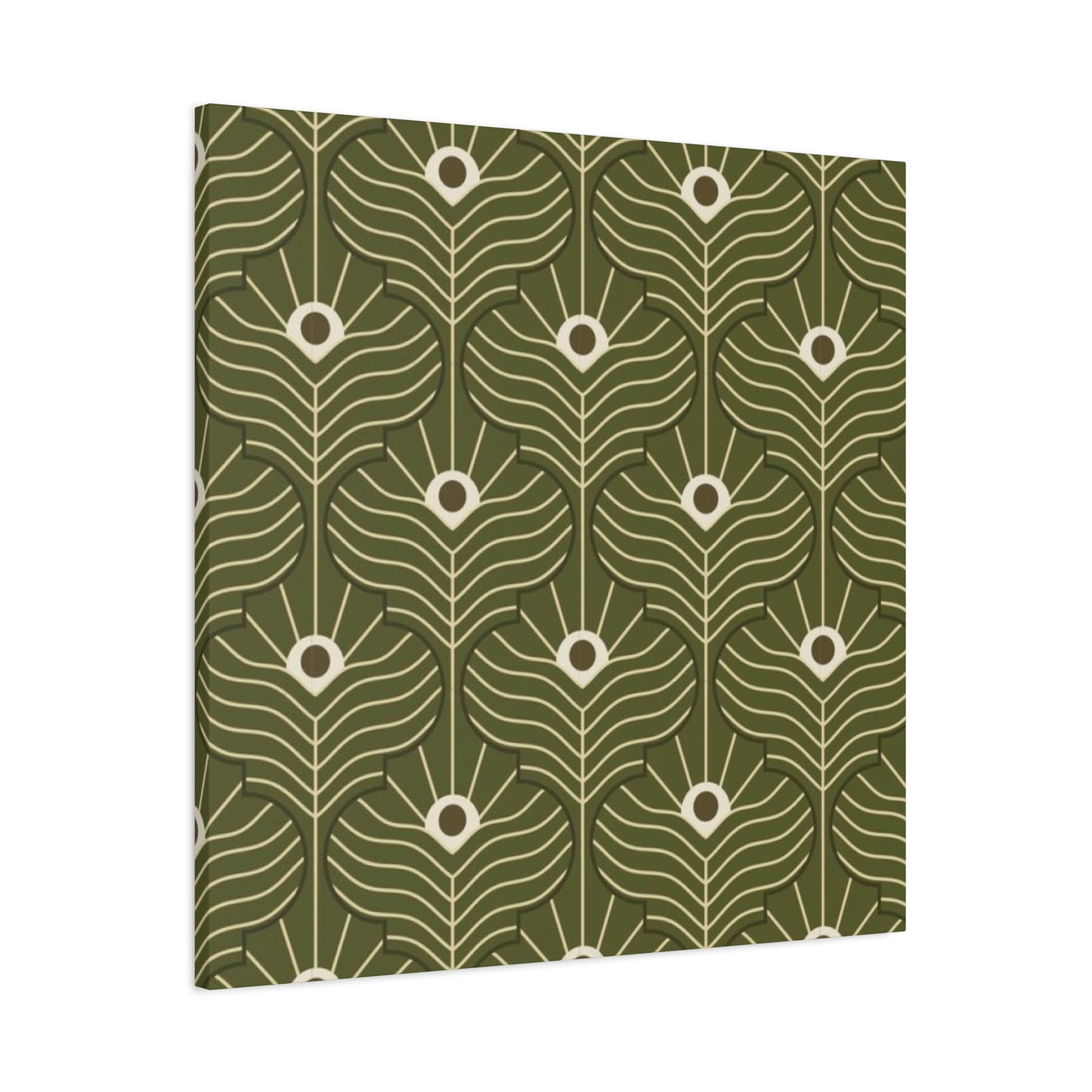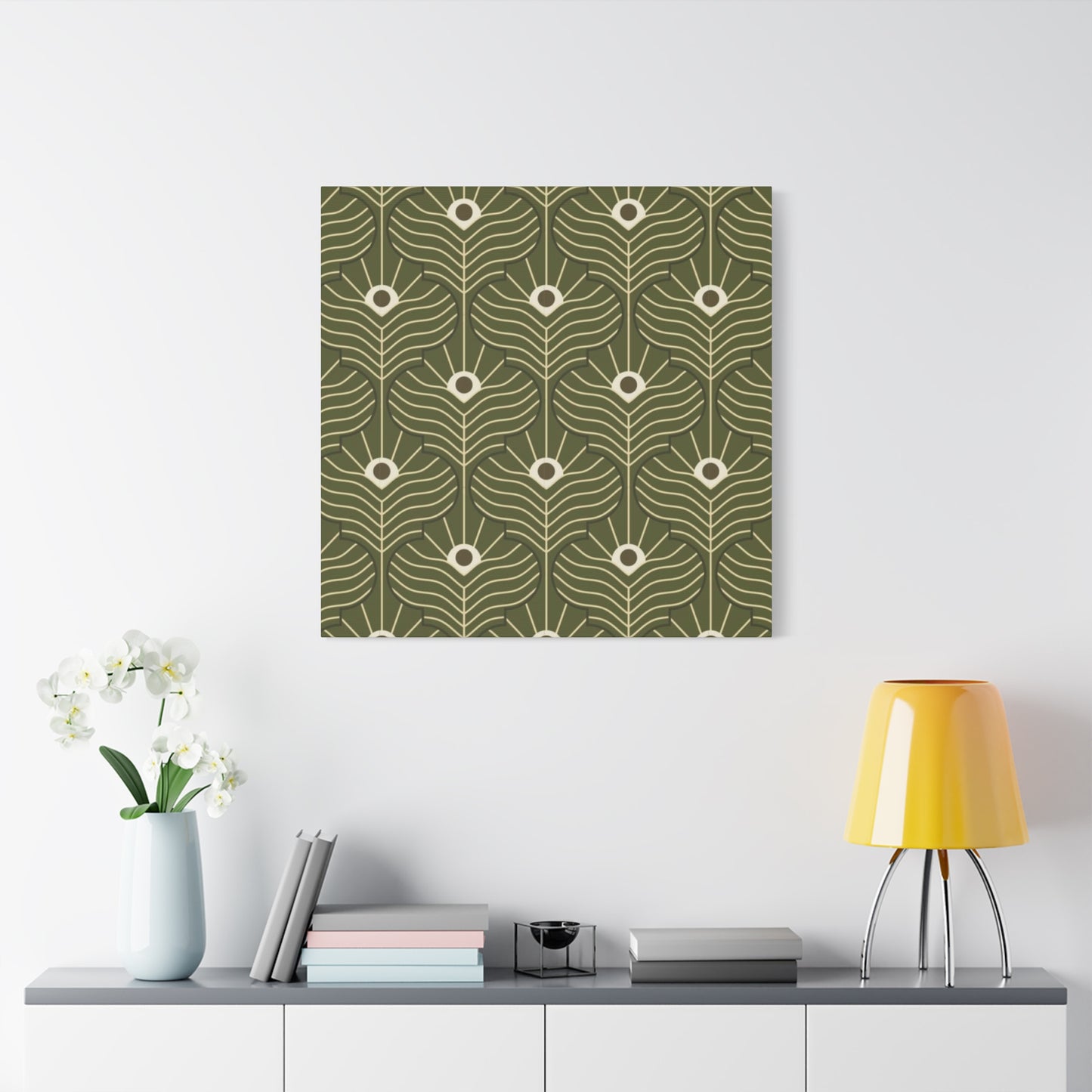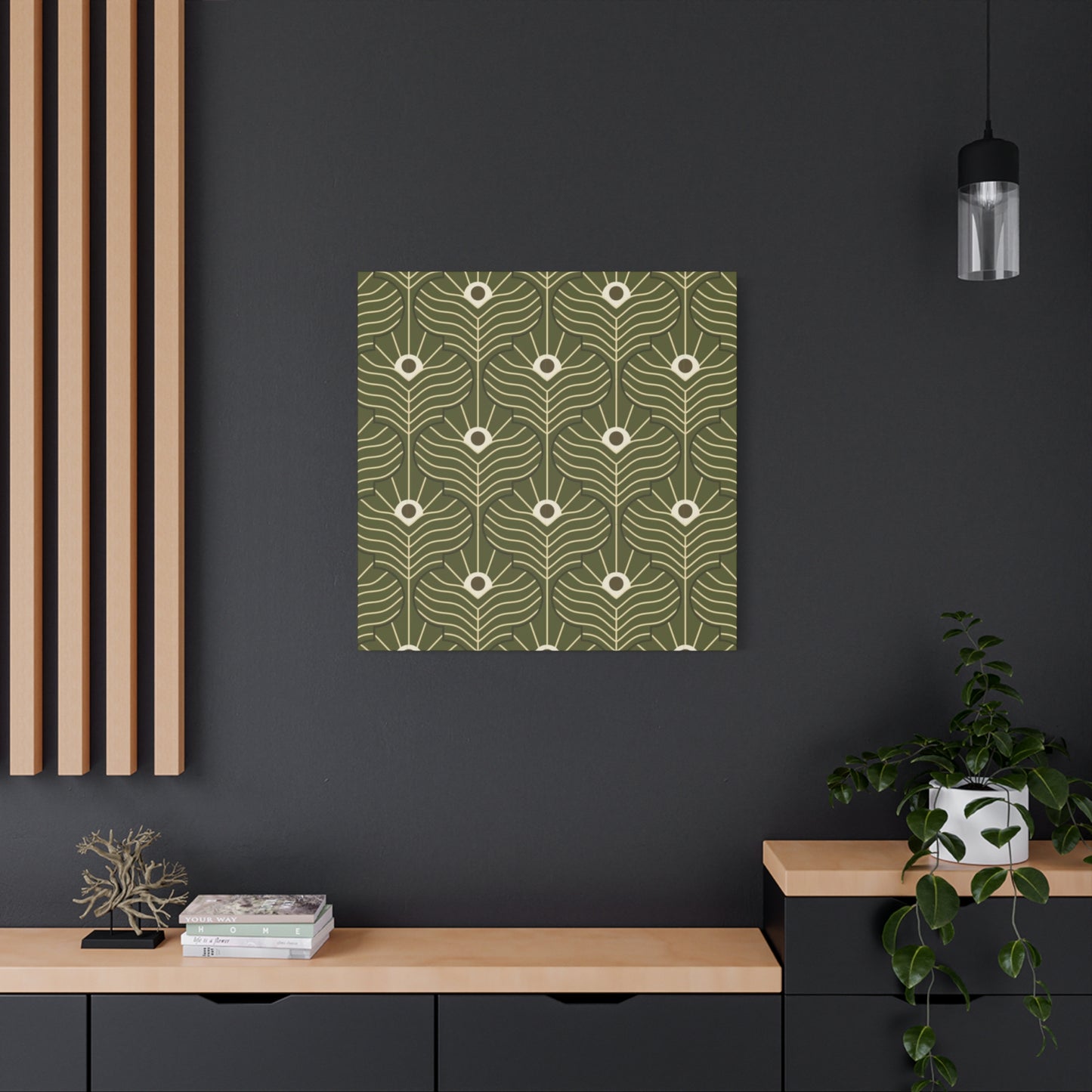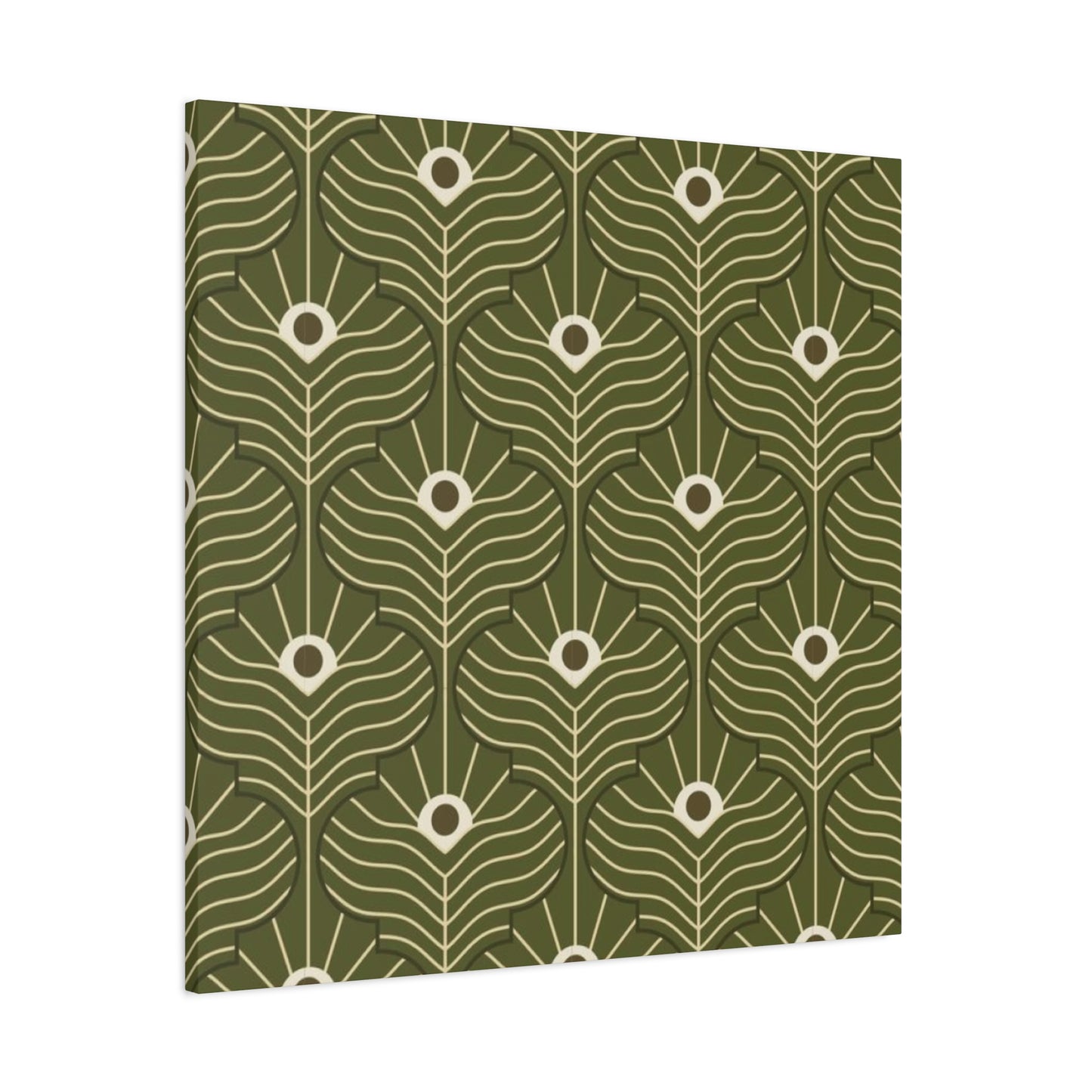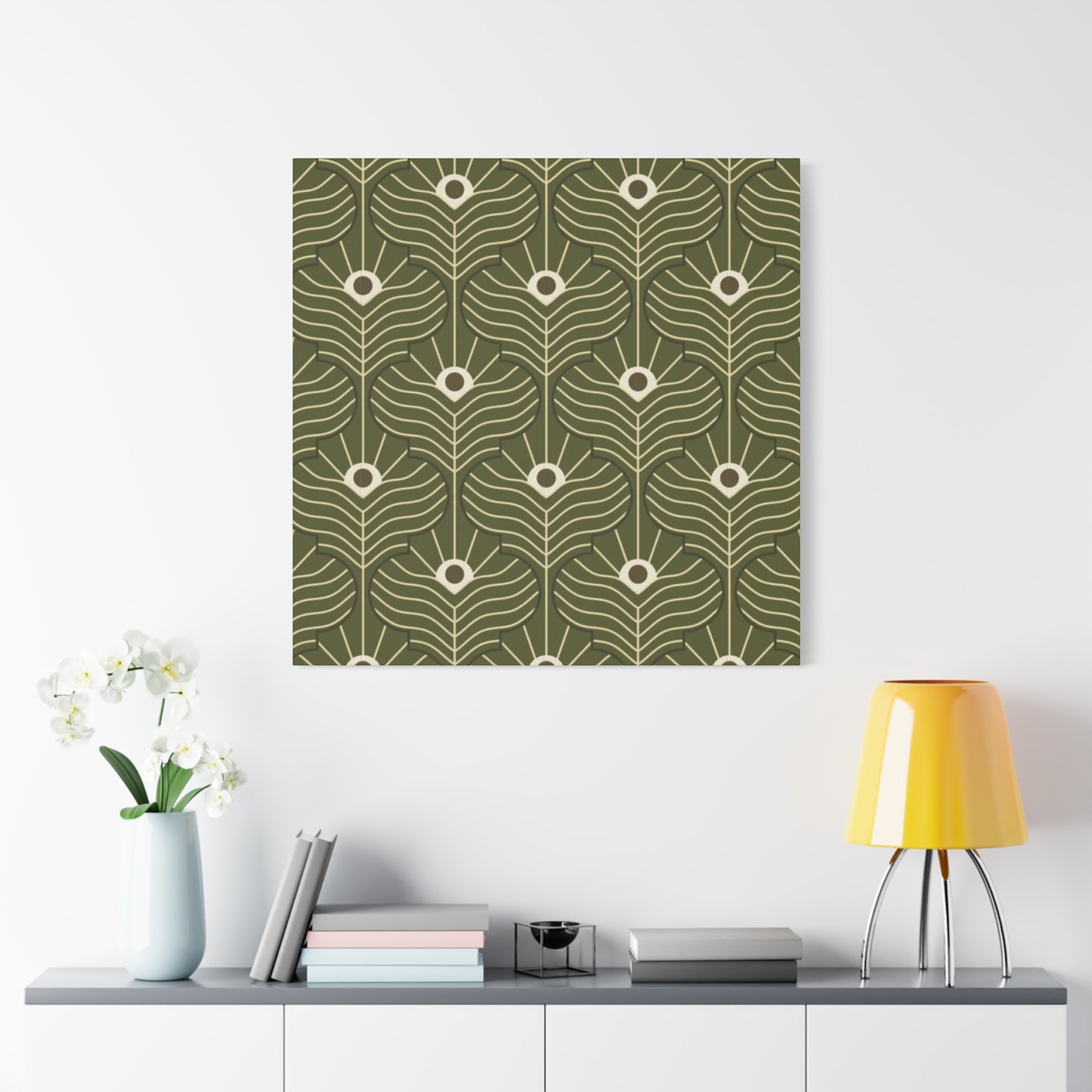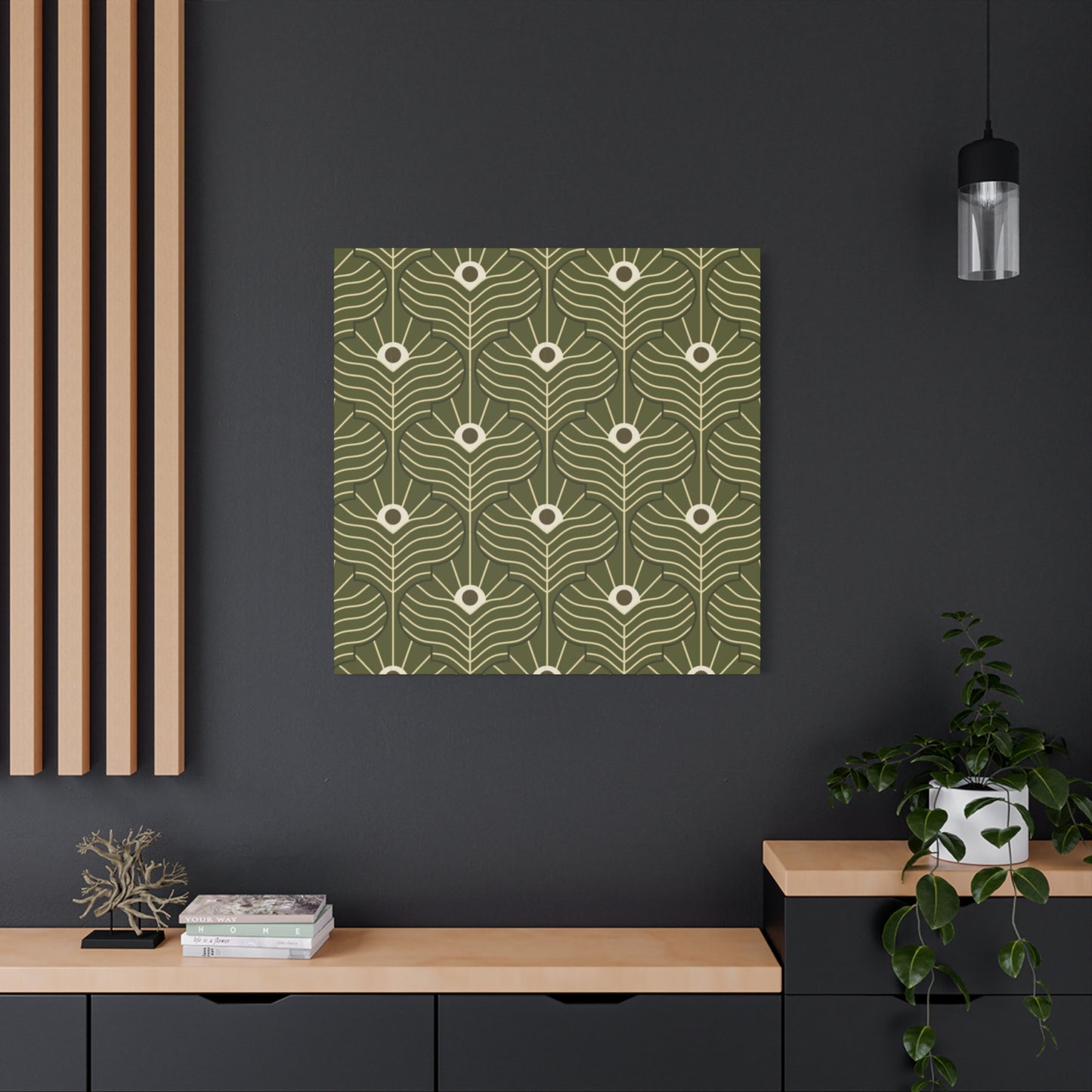Moroccan Green Pattern Wall Art: Vibrant Cultural Expression for Contemporary Homes
The captivating allure of Moroccan green pattern wall art represents centuries of artistic tradition merged with contemporary aesthetic sensibilities. These stunning visual elements bring the rich cultural heritage of North African craftsmanship directly into modern living environments, creating focal points that transform ordinary rooms into extraordinary cultural sanctuaries. The intricate geometrical designs, combined with the refreshing vibrancy of green hues, offer homeowners an opportunity to embrace both historical significance and modern decorative trends.
Green pattern wall art rooted in Moroccan tradition carries profound cultural meaning while serving practical decorative purposes in today's homes. The emerald, sage, forest, and jade tones commonly found in these artistic expressions connect viewers to the natural landscapes of Morocco, from the Atlas Mountains to the coastal regions. Each pattern tells a story of mathematical precision, spiritual symbolism, and artistic mastery that has been passed down through generations of skilled artisans.
Contemporary homeowners increasingly seek authentic cultural elements that provide depth and meaning to their living environments. Moroccan green pattern wall art fulfills this desire by offering visually striking designs that serve as conversation starters while maintaining sophisticated aesthetic appeal. The versatility of these patterns allows for seamless integration into various decorating styles, from minimalist modern approaches to maximalist eclectic arrangements.
The growing popularity of Moroccan-inspired decorative elements reflects a broader trend toward global cultural appreciation and authentic artistic expression. Green pattern wall art specifically appeals to those who value both environmental consciousness, as green represents nature and sustainability, and cultural diversity in their home decorating choices. These pieces serve as windows into a rich artistic tradition while providing contemporary homes with unique visual interest and cultural depth.
Combining Green Patterns with Warm Moroccan Colors
The harmonious blend of verdant green patterns with traditional warm Moroccan color palettes creates visually stunning combinations that elevate any room's aesthetic appeal. Moroccan artisans have long understood the power of color harmony, incorporating deep forest greens alongside rich terracotta, warm ochre, golden yellow, and burnt orange tones to create balanced compositions that feel both energizing and soothing. These color combinations reflect the natural landscapes of Morocco, where lush oases meet desert sands under brilliant azure skies.
When incorporating green patterns with warm Moroccan colors, consider the psychological impact of these color relationships on the overall atmosphere of your room. Green naturally promotes tranquility and balance, while warm colors like amber, copper, and rust create feelings of comfort and intimacy. The strategic combination of these color families results in environments that feel both rejuvenating and welcoming, making them ideal for gathering areas where families and friends come together to share experiences and create memories.
The traditional Moroccan approach to color combination often involves layering different intensities and saturations of complementary hues. Deep emerald green patterns might be paired with soft peach accents, while sage green designs could complement rich burgundy or deep purple elements. This layered approach to color creates visual depth and prevents the overall composition from appearing flat or monotonous. The interplay between cool green tones and warm accent colors creates dynamic visual tension that keeps the eye engaged and interested.
Contemporary applications of these traditional color principles allow for creative interpretation while maintaining the authentic spirit of Moroccan artistic expression. Modern homeowners might choose to emphasize certain color relationships more than others, perhaps highlighting the green patterns as primary focal points while using warm colors as subtle supporting elements. Alternatively, they might create bold statements by using warm colors as dominant themes with green patterns serving as refreshing accent elements that provide visual breathing room within the overall composition.
Lighting plays a crucial role in how these color combinations are perceived and experienced throughout different times of day. Natural daylight enhances the vibrancy of green patterns while allowing warm colors to maintain their richness without becoming overwhelming. Evening artificial lighting can transform these same color combinations, creating more intimate and cozy atmospheres where warm tones become more prominent and green patterns provide subtle contrast that prevents the environment from becoming too heavy or overwhelming.
The seasonal adaptability of green and warm Moroccan color combinations makes them excellent long-term decorating choices. During spring and summer months, the green elements feel fresh and revitalizing, while the warm colors provide grounding stability. In autumn and winter, the warm tones create cozy, intimate feelings while the green patterns prevent the environment from becoming too enclosed or oppressive. This year-round versatility makes these color combinations practical investments for homeowners who prefer decorative elements that remain relevant and appealing throughout changing seasons.
Texture plays an important supporting role in successful green and warm color combinations. Smooth ceramic surfaces might display crisp geometric green patterns alongside rough-textured warm-colored elements that create tactile contrast. Woven textiles with green patterns can be paired with smooth metallic accents in copper or gold tones. These textural variations enhance the visual impact of color combinations while adding layers of sensory experience that make rooms more engaging and memorable.
Large-Scale Moroccan Pattern Canvas Prints
Oversized canvas prints featuring intricate Moroccan patterns create dramatic focal points that instantly transform room atmospheres while showcasing the mathematical beauty and cultural significance of traditional North African artistic expression. These large-format pieces allow viewers to fully appreciate the complexity and precision of geometric patterns that might be lost or overlooked in smaller formats. The substantial visual presence of large-scale prints makes them ideal centerpieces for prominent wall locations where they can command attention and set the decorative tone for entire rooms.
The production quality of large-scale canvas prints significantly impacts their visual effectiveness and longevity as decorative elements. High-resolution printing techniques ensure that intricate pattern details remain sharp and clear even when viewed up close, while premium canvas materials provide appropriate texture and durability for long-term display. Professional-grade printing processes preserve color accuracy and prevent fading, ensuring that the vibrant greens and complementary hues maintain their impact over time.
Selecting appropriate sizes for large-scale Moroccan pattern prints requires careful consideration of room proportions and intended visual impact. Extremely large prints work best in rooms with high ceilings and generous wall areas where they can be viewed from appropriate distances. Medium-large prints might be more suitable for standard residential rooms where they can create significant impact without overwhelming the available viewing distance. The goal is to achieve maximum visual drama while maintaining comfortable proportions that allow viewers to appreciate both overall composition and detailed pattern work.
Installation considerations for large-scale canvas prints include proper mounting hardware that can safely support the weight and dimensions of oversized pieces. Professional installation may be advisable for particularly large or valuable prints to ensure proper positioning and secure mounting. The height at which large prints are hung affects how they interact with furniture and other decorative elements, with eye-level positioning generally providing the most engaging viewing experience.
Large-scale Moroccan pattern prints work exceptionally well as anchor pieces around which entire decorative schemes can be developed. The colors, patterns, and cultural themes present in these major pieces can inform choices for furniture, textiles, lighting, and accessories throughout the room. This approach ensures cohesive decorative themes while allowing the large-scale print to serve as the primary source of visual interest and cultural expression within the environment.
The investment value of high-quality large-scale prints makes them worthwhile additions to homes where they will be displayed for extended periods. Unlike smaller decorative elements that might be changed frequently, large-scale pieces often remain in place for years, making their initial cost more reasonable when considered over their entire useful lifespan. The substantial visual presence and cultural significance of these pieces also contribute to the perceived value and sophistication of home decorating schemes.
Caring for large-scale canvas prints involves regular dusting and protection from direct sunlight that could cause fading over time. Proper environmental controls, including appropriate humidity levels and protection from temperature extremes, help preserve both the canvas material and printed imagery. When properly maintained, high-quality large-scale prints can provide decades of visual enjoyment while retaining their original beauty and impact.
Framing Ideas for Green Moroccan Wall Art
Professional framing significantly enhances the presentation and longevity of green Moroccan wall art while providing opportunities to customize the overall aesthetic to complement specific decorating schemes and personal preferences. The choice of frame style, material, color, and proportion directly impacts how the artwork is perceived and how well it integrates with surrounding decorative elements. Thoughtful framing decisions can elevate simple prints into museum-quality presentations that command respect and admiration from viewers.
Traditional framing approaches for Moroccan wall art often emphasize materials and finishes that complement the cultural origins of the artwork itself. Rich wooden frames in warm tones like cherry, mahogany, or walnut provide classic elegance that honors the craftsmanship traditions associated with Moroccan artistry. Ornate carved frames with geometric or floral motifs can echo the pattern complexity found within the artwork itself, creating unified presentations where frame and content work together harmoniously.
Contemporary framing options offer clean, minimalist presentations that allow the green patterns and cultural significance of Moroccan wall art to take center stage without competing visual elements. Simple metal frames in brushed silver, antique brass, or matte black provide sophisticated contrast that highlights the artwork without drawing attention away from its inherent beauty. Floating frame designs create the illusion that artwork is suspended within the frame, adding modern visual interest while maintaining focus on the cultural content.
Custom matting options provide additional opportunities to enhance green Moroccan wall art presentations while protecting the artwork from direct contact with frame glass. Neutral mats in cream, off-white, or light gray create clean borders that separate artwork from frames while providing visual breathing room. Colored mats that complement or contrast with the green patterns can create more dynamic presentations, though care must be taken to ensure that mat colors enhance rather than compete with the artwork itself.
Multiple framing techniques can be employed when displaying collections of green Moroccan wall art pieces together. Uniform framing creates cohesive gallery-style presentations that emphasize the relationship between different pieces while maintaining clean, organized appearances. Varied framing approaches might use different frame styles or sizes to create more dynamic, eclectic presentations that reflect personal collecting interests and decorating preferences.
Conservation framing techniques become important considerations for valuable or meaningful pieces that will be displayed long-term. Acid-free mats, UV-protective glass, and archival mounting materials help preserve artwork integrity while preventing damage from environmental factors. These professional framing approaches represent larger initial investments but provide superior protection that maintains artwork value and appearance over extended periods.
Budget-conscious framing solutions can still provide attractive presentations for green Moroccan wall art without requiring professional custom work. Ready-made frames in standard sizes can be paired with pre-cut mats to create appealing presentations at fraction of custom framing costs. Online framing services offer middle-ground options that provide some customization benefits while maintaining reasonable pricing structures for homeowners with limited decorating budgets.
The Symbolism Behind Green in Moroccan Art
The profound cultural and spiritual significance of green within Moroccan artistic traditions extends far beyond mere aesthetic preferences, embodying complex layers of religious meaning, natural symbolism, and historical importance that have shaped North African visual culture for centuries. Understanding these deeper meanings enriches appreciation for green Moroccan wall art while providing insight into the cultural values and beliefs that continue to influence contemporary artistic expression throughout the region.
Islamic tradition holds green in particularly high regard, considering it the color of paradise and associating it with the Prophet Muhammad, who is said to have worn green garments and whose tomb is covered with green cloth. This religious significance permeates Moroccan artistic expression, where green appears not merely as decorative choice but as spiritual symbol carrying sacred meaning. Artists incorporate various shades of green into their work as expressions of faith, hope, and connection to divine principles that guide Islamic life and practice.
Natural symbolism associated with green reflects Morocco's diverse landscapes and agricultural heritage, from the fertile valleys of the Atlas Mountains to the coastal plains where olive groves and citrus orchards flourish. Green represents fertility, growth, renewal, and the life-giving properties of water in a region where these elements are precious and celebrated. Moroccan artists draw inspiration from these natural associations, incorporating green patterns that celebrate the abundance and beauty of the natural world.
Traditional Moroccan architecture frequently employs green elements in tile work, painted details, and decorative accents that connect built environments with natural landscapes. The famous green tiles of Islamic architecture, known as zellige, represent centuries of ceramic artistry where green glazes were carefully formulated and applied to create lasting beauty. These architectural traditions influence contemporary wall art where similar green tones evoke the grandeur and sophistication of historical Moroccan buildings.
The psychological effects of green in Moroccan artistic contexts reflect broader human responses to this color, which promotes feelings of balance, harmony, and tranquility. Moroccan artists understand these psychological associations and employ green strategically within compositions to create specific emotional responses in viewers. The calming influence of green patterns provides visual rest areas within more complex decorative schemes while maintaining connection to deeper cultural meanings.
Regional variations in green symbolism throughout Morocco reflect local environmental conditions and cultural influences. Coastal regions might emphasize blue-greens that reflect Mediterranean influences, while inland areas favor earth-toned greens that connect to agricultural landscapes. Desert regions often use green as precious accent color that represents the miracle of oases and water sources in arid environments.
Contemporary applications of traditional green symbolism in Moroccan wall art allow modern artists to maintain cultural authenticity while exploring new creative expressions. Artists might combine traditional geometric patterns with contemporary color interpretations of green, or use modern printing techniques to create new variations on classical green motifs. These contemporary approaches ensure that ancient symbolic traditions remain relevant and meaningful for current generations while honoring their historical importance.
Using Green Pattern Art in Living Room Decor
The strategic incorporation of green pattern art into living room environments creates welcoming, sophisticated atmospheres that promote both relaxation and engaging conversation while showcasing cultural appreciation and artistic sensibility. Living rooms serve as primary gathering areas where families and guests spend considerable time, making them ideal locations for meaningful artistic expression that reflects personal values and aesthetic preferences. Green Moroccan patterns bring natural tranquility combined with cultural richness to these important domestic environments.
Placement considerations for green pattern art in living rooms depend on furniture arrangements, lighting conditions, and desired visual impact levels. Large pieces work effectively above sofas or fireplace mantels where they can serve as focal points that anchor entire room compositions. Multiple smaller pieces might be arranged in gallery wall configurations that create visual interest across larger wall areas while allowing for more flexible arrangement options as decorating preferences evolve over time.
Color coordination between green pattern art and existing living room elements requires careful consideration of both warm and cool color relationships. Green patterns can complement neutral furniture in beige, cream, or gray tones while providing refreshing color accent that prevents rooms from appearing bland or uninspiring. Alternatively, green patterns can be paired with warm colors like terracotta, gold, or deep red to create more dynamic, energetic environments that encourage social interaction and lively conversation.
Lighting design significantly affects how green pattern art appears and functions within living room environments throughout different times of day. Natural daylight enhances the vibrancy and detail of green patterns while providing optimal viewing conditions for appreciating intricate geometric designs. Evening artificial lighting should be planned to provide appropriate illumination for artwork appreciation without creating glare or shadows that obscure pattern details or color accuracy.
Furniture selection and arrangement can either complement or compete with green pattern art depending on style choices and spatial relationships. Simple, clean-lined furniture allows green patterns to dominate visual attention, while ornate or heavily patterned furniture might create competing visual elements that reduce the effectiveness of wall art. The goal is to achieve balanced compositions where furniture and art work together to create cohesive, harmonious living environments.
Seasonal decorating strategies can incorporate green pattern art as permanent elements that work effectively with changing accent colors and temporary decorative additions. During spring and summer, green patterns complement fresh flowers, light fabrics, and bright accent colors. Fall and winter decorating might emphasize warm color accents that create cozy contrast with green patterns while maintaining year-round visual interest and cultural significance.
The long-term value of investing in quality green pattern art for living room decor justifies careful selection and proper installation. Unlike trendy decorative elements that quickly become outdated, culturally significant art maintains its relevance and appeal over extended periods. High-quality pieces can remain attractive and meaningful focal points for decades, making them excellent investments for homeowners who value lasting beauty and authentic cultural expression.
Abstract Moroccan Patterns Featuring Green Tones
Contemporary interpretations of traditional Moroccan geometric patterns through abstract artistic approaches create innovative wall art that maintains cultural authenticity while exploring modern creative possibilities and aesthetic sensibilities. Abstract green Moroccan patterns offer opportunities for artistic expression that honors historical traditions while allowing for creative freedom and personal interpretation that resonates with contemporary viewers who appreciate both cultural heritage and artistic innovation.
The mathematical foundation of traditional Moroccan patterns provides rich source material for abstract interpretation, where geometric principles can be explored through color, form, and composition in ways that emphasize pure visual experience over literal representation. Abstract approaches might simplify complex traditional patterns to focus on essential geometric relationships, or expand upon traditional motifs to create new compositions that maintain spiritual and cultural connections while expressing contemporary artistic vision.
Color exploration within abstract green Moroccan patterns allows artists to experiment with different shades, saturations, and combinations of green tones that might not appear in traditional work. Subtle gradations from pale sage to deep forest green can create depth and visual movement within abstract compositions. Multiple green tones might be combined with metallic accents or complementary colors to create sophisticated color relationships that maintain cultural authenticity while expressing modern aesthetic sensibilities.
Layering techniques in abstract Moroccan patterns create visual depth and complexity that rewards close examination while maintaining overall compositional clarity when viewed from distance. Semi-transparent green elements might overlay solid background colors, creating rich visual textures that change appearance under different lighting conditions. These layering approaches can suggest the complexity of traditional pattern systems while allowing for more fluid, organic artistic expression.
Scale manipulation in abstract interpretations allows artists to emphasize different aspects of traditional patterns by enlarging specific elements or reducing others to create new visual relationships. A small detail from a complex traditional pattern might become the primary focus of an abstract composition, allowing viewers to appreciate geometric beauty that might be overlooked in complete traditional presentations. These scale changes can create dramatic visual impact while maintaining authentic cultural connections.
Texture exploration in abstract green Moroccan patterns can incorporate both visual and actual tactile elements that add sensory dimensions to wall art presentations. Printed textures might simulate traditional materials like carved wood or ceramic tile, while actual textural elements could be incorporated into mixed-media presentations that combine traditional pattern inspiration with contemporary artistic techniques and materials.
The versatility of abstract approaches makes them particularly suitable for contemporary home environments where traditional patterns might feel too formal or culturally specific. Abstract green Moroccan patterns can integrate seamlessly into modern decorating schemes while providing cultural depth and artistic significance that enhance overall environmental sophistication. These pieces appeal to viewers who value both cultural appreciation and contemporary artistic expression in their home decorating choices.
DIY Projects with Moroccan Green Patterns
Creative individuals can explore Moroccan green pattern traditions through engaging do-it-yourself projects that provide hands-on experience with cultural artistic techniques while creating personalized decorative elements for their homes. DIY approaches allow for creative experimentation, skill development, and cost-effective production of custom wall art that reflects individual preferences and decorating needs. These projects range from simple crafting activities suitable for beginners to more complex artistic endeavors that challenge experienced makers.
Stenciling represents one of the most accessible entry points for creating DIY Moroccan green pattern art, allowing crafters to achieve professional-looking results without advanced artistic skills. Pre-made Moroccan pattern stencils can be purchased from craft suppliers, or custom stencils can be created using traditional geometric designs as inspiration. Multiple green paint colors can be layered through stencils to create depth and visual interest, while different stencil techniques can produce varied textures and effects.
Fabric printing projects offer opportunities to create custom textiles featuring Moroccan green patterns that can be framed as wall art or incorporated into home furnishing projects. Block printing techniques using carved stamps allow for repetitive pattern application across fabric surfaces, while screen printing methods can produce more detailed and consistent results for larger projects. Natural fabrics like cotton or linen provide excellent surfaces for green dye application and long-term display.
Paper crafting projects can produce intricate green Moroccan pattern art using techniques like paper cutting, origami folding, or collage assembly. Layered paper constructions can create dimensional wall art that casts interesting shadows and changes appearance under different lighting conditions. Green papers in various shades and textures can be combined to create rich visual compositions that honor traditional pattern complexity while expressing contemporary artistic sensibilities.
Painted canvas projects allow for direct artistic expression while providing opportunities to develop painting skills and color mixing techniques. Acrylic paints in various green tones can be applied using brushes, sponges, or other tools to create different textural effects and pattern variations. Canvas surfaces are readily available in multiple sizes and can be prepared with base colors or textures that enhance final pattern presentations.
Ceramic or tile painting projects create durable wall art pieces that reference traditional Moroccan tile work while allowing for personal creative expression. Blank ceramic tiles can be painted with special ceramic paints that, when properly fired, create permanent decorative surfaces suitable for long-term display. These projects require access to ceramic firing facilities but produce professional-quality results that closely approximate traditional Moroccan tilework.
Wood burning or carving projects offer three-dimensional approaches to Moroccan pattern creation that result in substantial wall art pieces with rich textural qualities. Geometric patterns can be burned or carved into wood surfaces that are then painted or stained in green tones to create striking visual presentations. These projects require specific tools and safety considerations but produce unique, handcrafted pieces that reflect both cultural inspiration and personal craftsmanship skills.
Moroccan Green Pattern Art for Entryways
The strategic placement of Moroccan green pattern art in entryways creates powerful first impressions that immediately communicate homeowners' appreciation for cultural beauty and sophisticated aesthetic sensibilities to guests and visitors. Entryways serve as transitional zones between public and private domains, making them ideal locations for meaningful artistic statements that set expectations for the cultural richness and visual sophistication found throughout the home.
Scale considerations for entryway art must account for the typically limited viewing distances and brief interaction times characteristic of these transitional areas. Medium-sized pieces often work better than very large artworks in entryways where viewers need to appreciate the art quickly while moving through the area. However, dramatic oversized pieces can create striking impact in grand entryways with generous proportions and extended viewing opportunities.
Lighting requirements for entryway art need to function effectively both during daytime hours when natural light might be limited and during evening hours when artificial lighting becomes primary illumination source. Green patterns can appear dramatically different under various lighting conditions, making it important to test artwork appearance under multiple lighting scenarios before final installation. Accent lighting specifically designed to highlight artwork can ensure consistent presentation quality regardless of time of day.
Durability considerations become particularly important for entryway art installations where increased humidity from opening doors, temperature fluctuations, and higher traffic levels can affect artwork longevity. Properly framed pieces with protective glazing resist environmental challenges better than unprotected prints or canvases. Professional mounting systems ensure that pieces remain securely positioned despite door vibrations and air currents common in entryway locations.
The welcoming psychological effects of green Moroccan patterns make them particularly appropriate for entryway installations where the goal is to create positive first impressions and comfortable transition experiences for guests. Green's natural association with growth, harmony, and tranquility immediately communicates hospitality and sophistication, while the cultural richness of Moroccan patterns suggests worldliness and appreciation for artistic traditions.
Coordination with entryway furniture and accessories allows green pattern art to function as part of cohesive design schemes that reinforce overall decorative themes. Console tables, mirror frames, lighting fixtures, and other entryway elements can incorporate complementary colors or materials that support the artistic statement made by green Moroccan wall art. This coordinated approach creates polished presentations that demonstrate thoughtful design planning.
Security considerations for valuable entryway art may require additional mounting hardware or protective measures since these areas are often visible from outside the home and may be more vulnerable to theft. Professional installation with secure mounting systems provides peace of mind while ensuring that artwork remains safely positioned. Insurance coverage for valuable art pieces should be confirmed with providers to ensure adequate protection in high-visibility entryway locations.
Mixing Moroccan Patterns with Natural Textures
The sophisticated combination of geometric Moroccan green patterns with natural textural elements creates rich, layered decorative schemes that celebrate both cultural artistry and organic beauty while providing visually engaging environments that appeal to multiple senses. This mixing approach honors traditional Moroccan design principles that incorporate natural materials alongside intricate patterns, creating harmonious compositions that feel both cultured and connected to the natural world.
Wood elements provide excellent textural contrast to precise geometric patterns, with grain patterns offering organic counterpoint to mathematical precision of Moroccan designs. Rough-hewn beams, smooth polished surfaces, and carved wooden details can all work effectively alongside green pattern art, depending on desired aesthetic effects and existing architectural elements. The warm tones of natural wood complement green patterns while adding tactile richness that invites closer examination and appreciation.
Stone and ceramic textures echo traditional Moroccan architectural materials while providing substantial visual weight that grounds pattern-heavy decorative schemes. Natural stone surfaces, whether rough or polished, add earthy authenticity that connects modern interiors to historical building traditions. Ceramic elements with handmade irregularities reference traditional pottery and tile work while providing textural variation that prevents compositions from appearing too perfect or machine-made.
Textile textures offer opportunities to incorporate natural fibers like wool, cotton, linen, and silk that add softness and warmth to environments dominated by hard surfaces and geometric patterns. Woven textures can complement or contrast with printed patterns depending on desired visual effects. Natural fiber rugs, pillows, and wall hangings provide tactile elements that make rooms more inviting and comfortable while supporting overall design themes.
Plant materials bring living natural elements into environments featuring Moroccan green patterns, creating connections between artistic representations of nature and actual growing plants. Potted plants, cut branches, dried flowers, and other botanical elements add organic shapes and natural color variations that provide refreshing contrast to geometric precision. The combination of living green plants with green pattern art creates layered natural references that feel authentic and visually rich.
Metal textures in natural finishes like copper, brass, and iron can bridge the gap between geometric patterns and organic textures by providing materials that reference both cultural traditions and natural elements. Hammered metal surfaces add handcrafted authenticity, while patinated finishes suggest age and natural weathering processes. These metal elements can appear in frames, lighting fixtures, furniture details, and decorative accessories that support overall design themes.
Natural lighting effects create additional textural dimension by casting shadows and highlights that change throughout the day, adding temporal variation to static decorative compositions. Sunlight filtering through natural materials like bamboo blinds or woven screens can create moving shadow patterns that complement static geometric designs. These lighting textures add dynamic elements that keep environments interesting and engaging over extended periods.
The Role of Green in Islamic Moroccan Art
The sacred significance of green within Islamic artistic traditions profoundly influences Moroccan cultural expression, where this revered color carries deep spiritual meaning that extends far beyond decorative preferences to encompass religious devotion, cultural identity, and artistic excellence that has been refined over centuries of Islamic civilization in North Africa. Understanding this religious and cultural foundation enriches appreciation for green Moroccan patterns while providing insight into the values and beliefs that continue to shape contemporary artistic expression.
Historical documentation reveals that green's association with Islamic faith dates to the earliest periods of Muslim expansion, when the color became linked with the Prophet Muhammad through various traditional accounts and symbolic associations. These religious connections transformed green from simple color choice to sacred symbol carrying profound meaning for Muslim artists and viewers. Moroccan artists working within Islamic traditions incorporate green not merely as aesthetic element but as expression of faith and cultural identity.
The theological significance of green in Islamic thought connects the color to concepts of paradise, eternal life, and divine blessing that appear throughout Quranic descriptions and Islamic literature. Paradise is frequently described in terms of lush greenery, flowing water, and eternal spring, creating powerful associations between green color and spiritual salvation. Moroccan artists draw upon these theological associations when incorporating green into their work, imbuing decorative patterns with layers of spiritual meaning.
Architectural applications of green in Islamic Moroccan buildings demonstrate how religious symbolism translates into physical environments where believers gather for worship and community activities. The famous green tile work of mosques and religious buildings serves both decorative and symbolic functions, creating beautiful environments that also communicate religious values. These architectural traditions influence contemporary wall art where similar symbolic applications maintain cultural authenticity.
Regional variations in green symbolism throughout the Islamic world reflect local cultural influences while maintaining core religious associations. Moroccan applications often emphasize connections to local landscapes and natural abundance, where green represents the fertility of agricultural regions and the life-giving properties of water in semi-arid environments. These regional adaptations allow universal Islamic symbolism to connect with specific local experiences and environmental conditions.
Calligraphic traditions within Islamic art often incorporate green elements in religious texts and decorative inscriptions that combine sacred content with beautiful visual presentation. The integration of green color into Arabic calligraphy creates artworks that function both as religious expression and aesthetic achievement. Contemporary Moroccan artists might reference these calligraphic traditions when creating pattern-based works that honor historical precedents while exploring new creative possibilities.
The educational role of green Islamic art in transmitting cultural and religious values across generations makes it particularly important for Muslim communities seeking to maintain cultural connections in diverse modern environments. Green Moroccan wall art can serve as teaching tools that introduce younger generations to their cultural heritage while providing ongoing reminders of religious and cultural values for adult viewers. This educational function adds significant meaning to decorative choices that might otherwise be considered merely aesthetic preferences.
Green Pattern Wall Art as Unique Gift Ideas
Thoughtfully selected green Moroccan pattern wall art makes exceptionally meaningful gifts that combine aesthetic beauty with cultural significance, providing recipients with lasting decorative elements that enrich their living environments while demonstrating the giver's appreciation for authentic artistic traditions and sophisticated design sensibilities. The cultural depth and visual appeal of these pieces make them suitable for a wide range of gift-giving occasions and recipient preferences.
Wedding gifts featuring green Moroccan patterns offer couples meaningful art that can serve as foundation pieces for developing their shared home aesthetic while providing cultural richness that supports their new life together. The symbolism of green as representing growth, harmony, and new beginnings makes it particularly appropriate for celebrating marital unions. Custom framing or personalization options can make these gifts even more special and memorable for recipients.
Housewarming gifts incorporating green patterns help new homeowners establish welcoming, sophisticated atmospheres in their fresh living environments while providing them with conversation pieces that reflect cultural appreciation and artistic sophistication. The versatility of green Moroccan patterns allows them to work effectively in various decorating schemes, making them practical gifts that recipients can incorporate regardless of their existing decorative preferences.
Professional recognition gifts featuring high-quality green pattern art acknowledge achievements while providing recipients with meaningful decorative elements for office or home display. The sophisticated cultural associations of Moroccan artistic traditions make these gifts appropriate for professional contexts where aesthetic quality and cultural awareness are valued. Custom mounting or presentation options can enhance the perceived value and significance of these recognition pieces.
Cultural appreciation gifts allow individuals to share their love of Moroccan artistic traditions with friends and family members who might be interested in exploring new aesthetic experiences. These gifts can serve as introductions to cultural traditions while providing beautiful decorative elements that enhance recipients' home environments. Educational materials or cultural context information can accompany artistic gifts to provide additional meaning and appreciation opportunities.
Holiday gift strategies can incorporate green Moroccan patterns as alternatives to traditional seasonal decorative themes while maintaining festive spirit through sophisticated artistic expression. The year-round appeal of these cultural patterns makes them excellent choices for recipients who prefer decorative elements that remain relevant beyond specific holiday seasons. Gift sets might combine wall art with complementary decorative accessories that create cohesive cultural themes.
Budget-conscious gift options can still provide meaningful green pattern art through careful selection of smaller pieces, print reproductions, or DIY elements that maintain cultural authenticity while accommodating financial limitations. The meaning and cultural significance of these gifts often matters more than their monetary value, making thoughtful selection more important than expensive price points. Creative presentation and personalization can enhance the perceived value of modest gifts.
Corporate gift programs can incorporate green Moroccan pattern art as distinctive alternatives to traditional business gifts, providing clients and associates with memorable pieces that demonstrate cultural sophistication and artistic appreciation. These gifts can help businesses establish reputations for cultural awareness and sophisticated aesthetic judgment while providing practical decorative elements that recipients can enjoy long-term. Custom mounting or presentation options can incorporate corporate branding elements while maintaining artistic integrity.
Creating Gallery Walls with Moroccan Pattern Prints
The artful arrangement of multiple Moroccan green pattern prints into cohesive gallery wall presentations creates dramatic visual statements that transform large wall areas into sophisticated cultural displays while providing opportunities to showcase diverse pattern variations and artistic interpretations within unified thematic frameworks. Gallery walls allow for creative expression through composition, scale variation, and color coordination while honoring the rich tradition of Moroccan artistic excellence.
Planning gallery wall compositions requires careful consideration of individual piece relationships, overall visual balance, and viewing distance requirements that ensure effective presentation from multiple angles and positions within the room. Successful gallery walls typically incorporate variety in piece sizes, frame styles, and pattern scales while maintaining unified color themes and cultural authenticity. The goal is to create compositions that feel intentional and harmonious rather than random or chaotic.
Color coordination strategies for Moroccan pattern gallery walls can emphasize monochromatic green themes that showcase subtle variations in hue and saturation, or incorporate complementary colors that create more dynamic visual relationships. Successful color coordination often requires viewing pieces together before final installation to ensure that individual pieces work effectively as group while maintaining their individual visual appeal and cultural significance.
Frame selection for gallery walls can utilize uniform framing approaches that emphasize the relationship between different patterns, or varied framing styles that highlight individual pieces while contributing to overall compositional diversity. The choice between uniform and varied approaches depends on desired aesthetic effects and existing room characteristics. Professional framing advice can be valuable for ensuring that framing choices enhance rather than detract from overall gallery wall success.
Installation techniques for gallery walls require careful planning to achieve proper spacing, alignment, and secure mounting for multiple pieces of varying sizes and weights. Template systems using paper cutouts can help establish final arrangements before actual installation begins. Professional installation services may be advisable for valuable or complex gallery walls where precision and security are important considerations.
Lighting design for gallery walls must accommodate multiple pieces with potentially different lighting requirements while creating overall illumination that enhances viewing experience without creating problematic shadows or glare. Track lighting systems offer flexibility for highlighting individual pieces within gallery wall arrangements. Natural lighting considerations should also be evaluated to ensure that all pieces receive appropriate illumination throughout different times of day.
Evolution strategies allow gallery walls to grow and change over time as new pieces are acquired or decorating preferences develop. Initial installations might include spaces for future additions, or existing arrangements might be modified to incorporate new elements. The ability to modify and expand gallery walls makes them dynamic decorative elements that can continue to provide interest and satisfaction over extended periods.
Maintenance requirements for gallery walls include regular dusting of individual pieces and periodic evaluation of mounting hardware to ensure continued security and proper positioning. Professional cleaning services may be advisable for valuable pieces or complex installations where individual attention to each element ensures long-term preservation and continued visual appeal. Proper maintenance ensures that gallery wall investments continue to provide beauty and cultural enrichment for years to come.
Conclusion
The exploration of Moroccan green pattern wall art reveals a rich tapestry of cultural significance, artistic excellence, and contemporary relevance that makes these decorative elements valuable additions to modern homes seeking authentic beauty and meaningful cultural expression. From the deep spiritual symbolism of green in Islamic tradition to the mathematical precision of geometric patterns, these artworks represent centuries of refined artistic development that continues to inspire and enrich contemporary living environments.
The versatility of green Moroccan patterns allows them to function effectively across diverse decorating styles and home environments, whether serving as dramatic focal points in large-scale presentations or contributing subtle cultural accents within mixed decorative schemes. Their natural color associations promote tranquility and harmony while their cultural depth provides ongoing sources of interest and appreciation that reward extended contemplation and study.
The practical considerations surrounding selection, installation, and maintenance of green Moroccan pattern wall art demonstrate that these cultural treasures can be successfully incorporated into contemporary homes with proper planning and care. From framing decisions that enhance presentation quality to lighting design that ensures optimal viewing conditions, thoughtful attention to technical details ensures that these artistic investments provide lasting beauty and satisfaction.

















